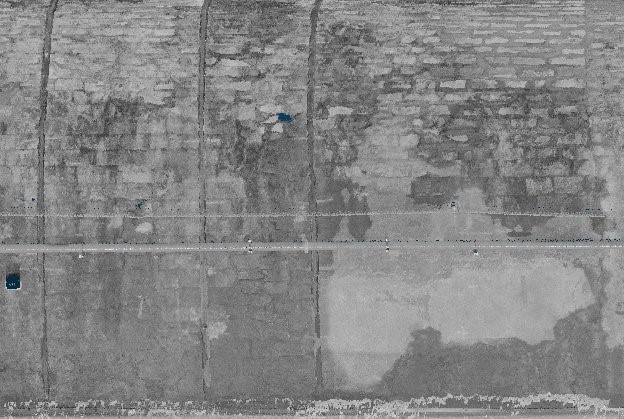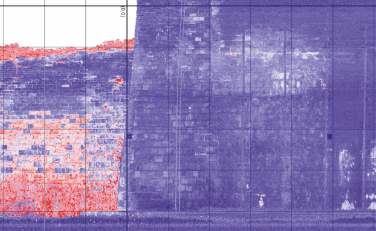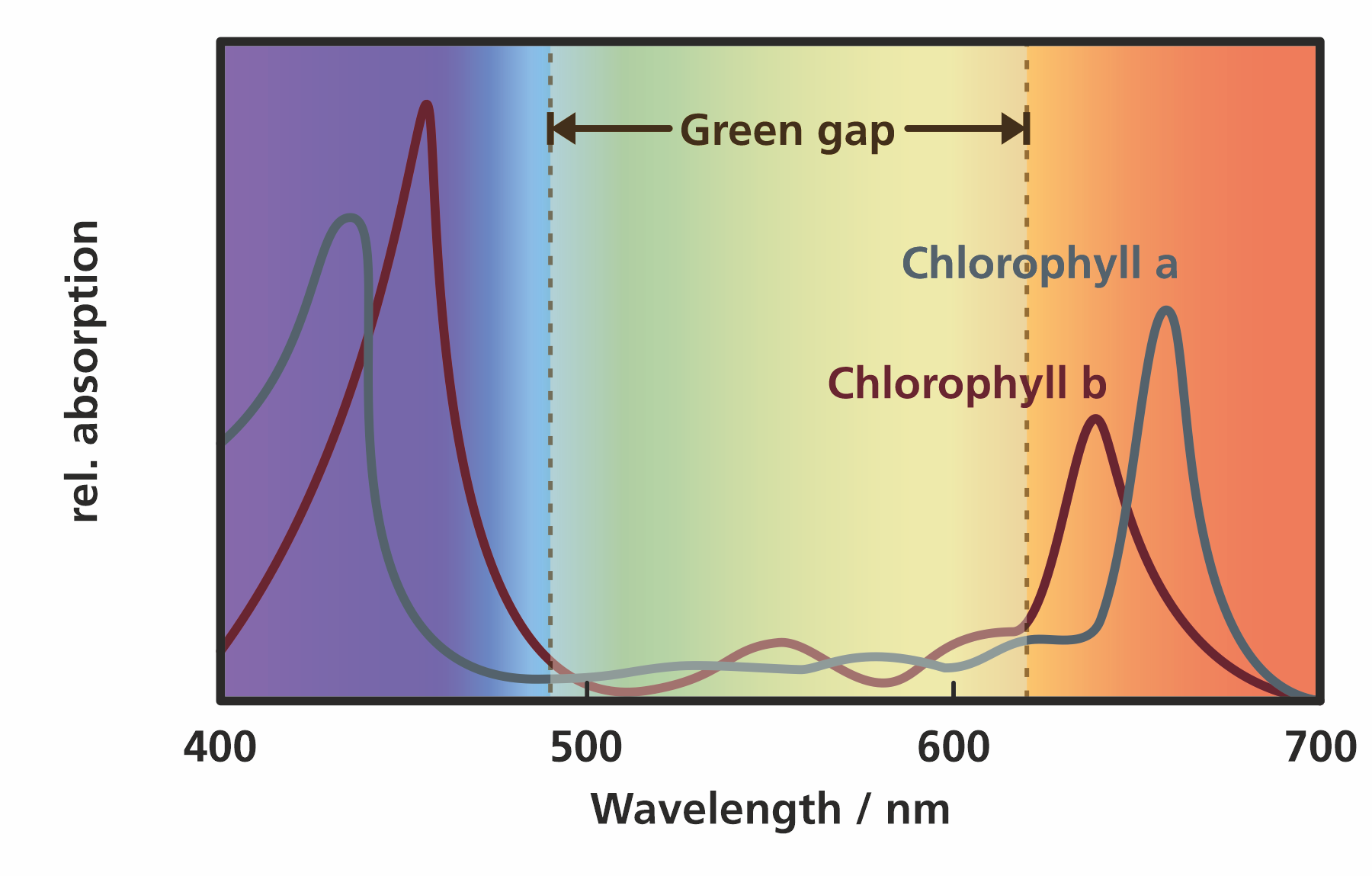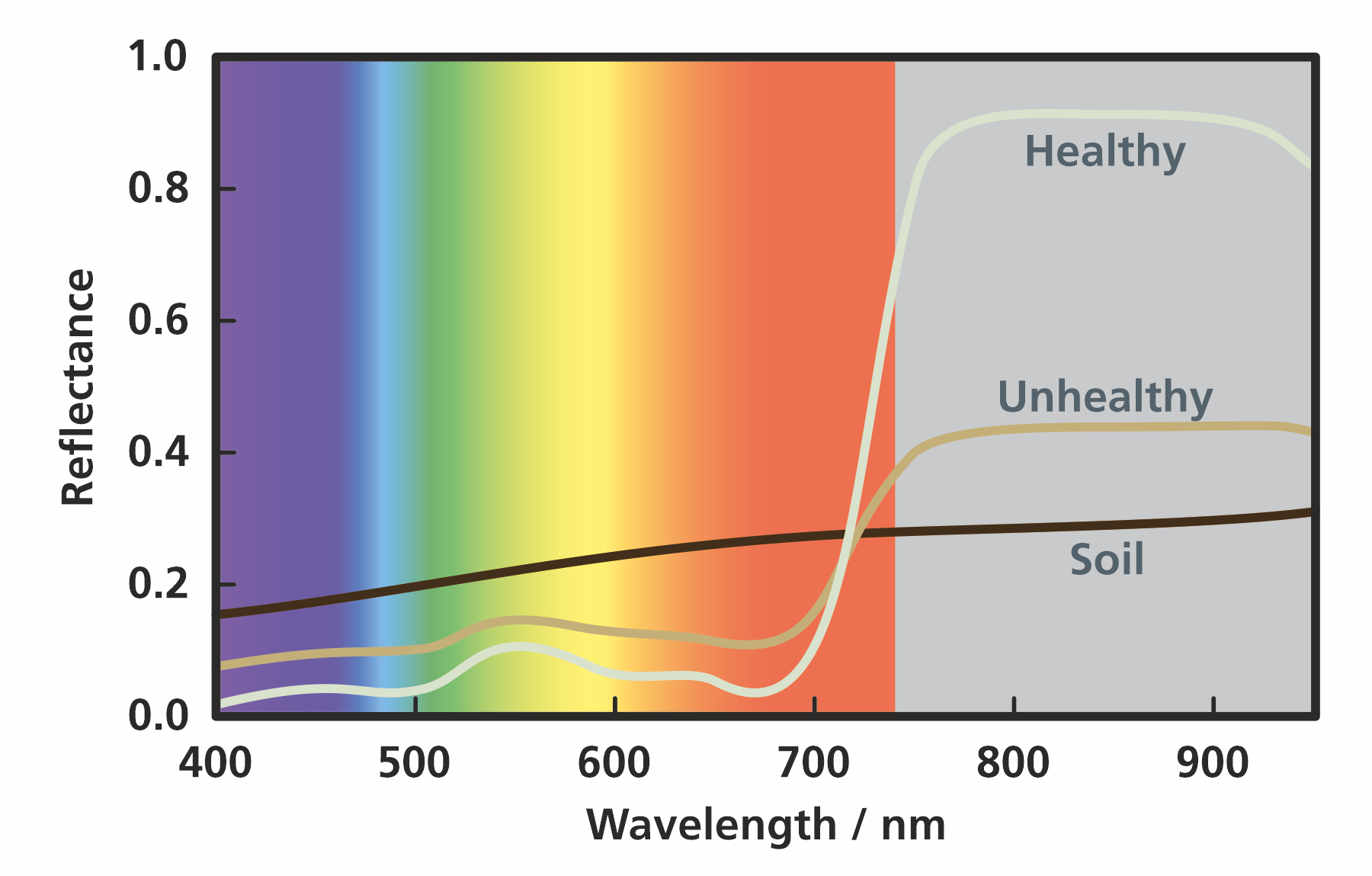Multispectral analysis provides information about object properties


When measuring objects in 3D, multispectral analysis often makes it possible to assign further parameters to the object in addition to the pure geometric data. This is done by taking advantage of the fact that each material has a unique spectral fingerprint. This means that light of different colors is absorbed to different degrees by objects with varying properties. For multispectral analysis we use either passive systems, i.e. cameras with corresponding color filters, or active systems, i.e. laser scanners with laser beams of different wavelengths. Analyzing a multispectral signal allows, for example, to draw conclusions about the health condition of plants, to distinguish between ice and water and to make moisture in rooms visible.
Reliable moisture detection
Water is a good example: while it is transparent in the visible spectral range, it exhibits strong absorption in the near infrared (NIR) at optical wavelengths of 1450 nm and 1950 nm. This property can be used to detect water. For this purpose we use Differential Optical Absorption Spectroscopy (DOAS). DOAS is common practice, for example, for determining moisture in food. Two collinear laser beams of different wavelengths scan the object surface. The beams are very specifically absorbed by water. At a wavelength of 1450 nm, the measuring beam is selected according to the absorption band of water. The second laser with 1300 nm wavelength is located outside this absorption band and serves as an intensity reference. The moisture value results from the intensity analysis of the two signals. The recorded intensity values of both wavelengths are standardized to the target intensities of an ideal dry target with a Lambertian scattering behavior and a reflectivity of about 90 percent. This makes it possible to differentiate very precisely between different moisture values (e.g. strong, medium, weak) while taking into account the reduction in overall intensity caused by material changes, color, dirt, etc.


